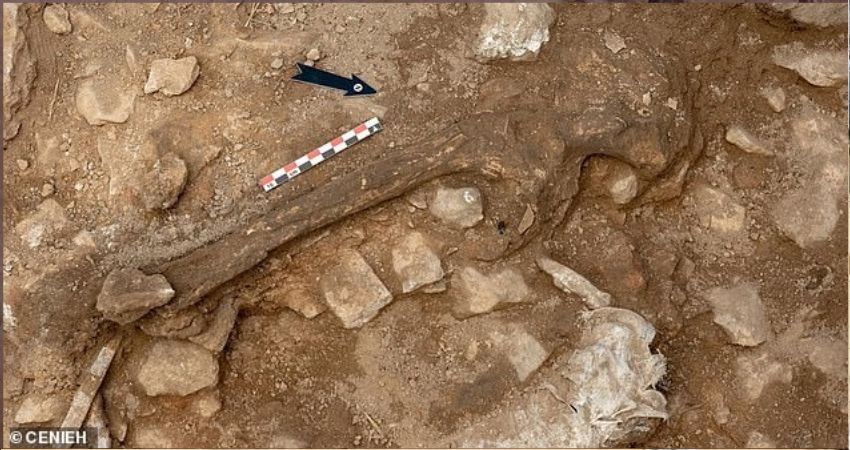Archaeologists have found the remains of a woman who lived 14,000 years ago, the first signs of a modern burial at the historically important Cova Gran de Santa Linya site in Spain, where evidence of the last Neanderthals and the first modern humans has previously been unearthed.
Experts found the remains of a woman that lived 14,000 years ago at the Cova Gran de Santa Linya site in Spain. Two femurs, an arm bone, leg bone and bones from hands and feet of ‘Linya, the La Noguera woman’ were unearthed. A skull, vertebrate and ribs were also discovered

Dubbed ‘Linya, the La Noguera woman,’ experts found two of the woman’s femurs, one still attached to a pelvis, an arm and leg bone and bones from her hands and feet.
The woman’s skull, vertebrate and ribs were also discovered, though these were poorly preserved.
The archaeologists used carbon-14 dating of the sediment to determine the woman’s age.
‘We recovered bone remains which definitely belonged to a human skeleton, and still partly connected, two meters below the ground of a side area of the excavation,’ said Centro Nacional de Investigación sobre la Evolución Humana (CENIEH) researcher Alfonso Benito Calvo in a statement.
‘A location that didn’t presage the appearance of this kind of remains.’
The bones were located were several large blocks had fallen from the roof of the cave.

Linya’s bones were found in the supine position, or lying horizontally, with her skull and torso facing up.
According to experts, the Cova Gran de Santa Linya site is considered ‘key’ to the study of human presence in the northeastern Iberian Peninsula.
It covers more than 2,500 square miles and is one of the so-called ‘transition’ sites that have shown evidence of the last Neanderthals, some 45,000 years ago, and the first modern humans, ranging between 37,000 and 30,000 years ago.
Archaeologists have also previously uncovered evidence of the Last Glacial Maximum, which took place between 20,000 and 15,000 years ago.
Evidence of the first farmers, which originated between 7,000 and 4,000 years ago, has also been discovered at the site.
First discovered in 2002, archaeologists have uncovered artifacts ranging between 45,000 and 4,000 years ago at Cova Gran de Santa Linya, but no human remains until 2020’s excavation campaign.

It is one of the ‘transition’ sites that have shown evidence of the last Neanderthals and the first modern humans Evidence of the Last Glacial Maximum and the first farmers have also been discovered at the site
Experts from CENIEH note that there are innumerable buried vestiges at the site, thanks to the sediment at Cova Gran.
This will allow them to accurately recreate the populations who lived in the area over the last 50,000 years, from ancient Neanderthals to the first Homo sapiens.
Further analysis of the soil may eventually reveal if Linya’s body was covered with animal skins or plants, Calvo further explained.
‘Prehistoric remains of modern humans in the Iberian Peninsula are very scarce.
‘The study of Linya will let us learn more about what the hunter-gatherers of the northeast of the Peninsula were like, and how they lived.’





